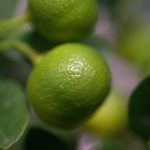Wordtype B Consonant Gradation
In this article, we take a look at wordtype B consonant gradation.
1. What is Consonant Gradation?
Consonant gradation (astevaihtelu or KPT-vaihtelu) is something you’re going to run into all the time when learning Finnish. It’s something that affects both nouns and verbs, though in different ways. It’s called gradation, because words can have a “strong” grade and a “weak” grade. This change takes place when we add an ending (a case) to a word.
Consonant gradation only affects certain consonants (K, P and T). When conjugating a verb or noun, the K, P and T in the middle of the word can change. Different verbtypes undergo a different system of consonant gradation.
In this article we will look at what kind of consonant gradation wordtype B words have. We also have an article on wordtype A consonant gradation.
1. What is Wordtype B?
Wordtypes (sanatyypit) are based on what kind of letters are at the end of the word. Finnish has many cases that you add to the end of words. As such, there are a lot of changes that happen at the border of the word and the ending.
Wordtype B is less common than wordtype A. If you’ve been studying for a short period of time, you probably haven’t learned yet about wordtype B. If that’s the case, focus on wordtype A consonant gradation until you have a decent grasp on it before learning wordtype B. Save yourself some confusion!
Wordtype B consists of the following wordtypes:
- Words ending in -e: e.g. parveke, hylje, murre
- Words ending in -in: e.g. kahvinkeitin, tuuletin, soitin
- Words ending in -as: e.g. rakas, puhdas, hammas
- Words ending in -ton: e.g. työtön, arvoton, unohtumaton
- Words ending in -tar: e.g. ystävätär, kuningatar, opettajatar
- Some words ending in -is: e.g. raitis, ruis
2. When Do You Use Consonant Gradation?
For Wordtype B, the nominative of the word (the basic form) will always be weak. All the other forms will be strong, except for the partitive.
Strong forms:
- T-plural (-t, mitkä?): osoitteet, hampaat, keittimet
- Genitive (-n, minkä?): osoitteen, hampaan, keittimen
- Inessive (-ssa, missä?): osoitteessa, hampaassa, keittimessä
- Elative (-sta, mistä?): osoitteesta, hampaasta, keittimestä
- Illative (-Vn, -hVn, -seen, mihin?): osoitteeseen, hampaaseen, keittimeen
- Adessive (-lla, millä?): osoitteella, hampaalla, keittimellä
- Ablative (-lta, miltä?): osoitteelta, hampaalta, keittimeltä
- Allative (-lle, mille?): osoitteelle, hampaalle, keittimelle
- Translative (-ksi, miksi?): osoitteeksi, hampaaksi, keittimeksi
- Essive (-na, minä?): osoitteena, hampaana, keittimenä
- Abessive (-tta, ilman mitä?): eg. osoitteetta (rare case, check here)
- Instructive (-in, miten?): eg. kynsin hampain (rare case, check here)
Weak forms:
- Nominative: (mikä?): osoite, hammas, keitin
- Partitive (mitä?): osoitetta, hammasta, keitintä
3. Which Consonants Change?
Consonant gradation only happens to the following consonants.
| Weak | Strong | Example 1 | Example 2 |
|---|---|---|---|
| k | kk | liike → liikkeessä | rakas → rakkaat |
| p | pp | opas → oppaassa | saapas → saappaassa |
| t | tt | osoite → osoitteessa | soitin → soittimessa |
| nn | nt | ranne → ranteessa | asenne → asenteessa |
| ng | nk | kangas → kankaassa | rengas → renkaassa |
| mm | mp | hammas → hampaassa | lammas → lampaassa |
| ll | lt | allas → altaalla | helle → helteessä |
| rr | rt | murre → murteessa | porras → portaalla |
| d | t | hidas → hitaassa | tehdas → tehtaassa |
| Ø | k | koe → kokeessa | varas → varkaalla |
| v | p | varvas → varpaassa | taive → taipeessa |
| hje | hke | lahje → lahkeessa | pohje → pohkeessa |
| lje | lke | hylje → hylkeessä | palje → palkeessa |
4. Limitations on Consonant Gradation
If a certain consonant combination is not included in the list above, they’re not subject to consonant gradation. For example: -ss- is not in the list, so you will never consonant gradate -ss- to -s-.
Consonant gradation can only take place at the border between the last and the one-but-last syllable. This means that certain longer words won’t be subject to consonant gradation. For example the word “sekoite” will have consonant gradation, but only at the end of the word: the -t- will become -tt-, but the -k- will stay the same: sekoitteessa, sekoitteet, etc.
You can read more about consonant gradation of both verbs and nouns in this overview.





What about Joukkue (Team)? the Nominative is also double kk, so is the partitive
I was on vacation, so apologies for the slow reply! The syllables of the word joukkue are jouk-ku-e. Consonant gradation only happens at the edge of the last and one-but-last syllable, so the kk stays kk